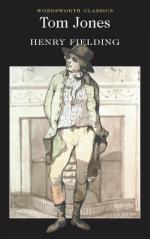|
This section contains 5,806 words (approx. 20 pages at 300 words per page) |

|
SOURCE: "The Physiology of Deceit in Fielding's Works," in The Dalhousie Review, Vol. 62, No. 1, 1982, pp. 140-52.
In the following essay, McKenzie examines Fielding's use of physiology in each of his major novels, arguing that Fielding's depictions of theatrical displays of passion offer keys to interpreting the actions of his characters.
As unwilling to be imposed upon as the most sceptical of his contemporaries, and with an eye for deceit sharpened both behind the stage and upon the bench, Henry Fielding developed one of the general concerns of his age into high art. He equipped many of his characters with certain passions and their attendant physiology—just enough to generate deceit, discomfort, and, eventually, discovery. The mechanism of the passions is not, I need hardly add, something Fielding invented; he relied on the tradition of faculty psychology originated by Aristotle and modified by the stoics, Galen, Descartes, and many...
|
This section contains 5,806 words (approx. 20 pages at 300 words per page) |

|


